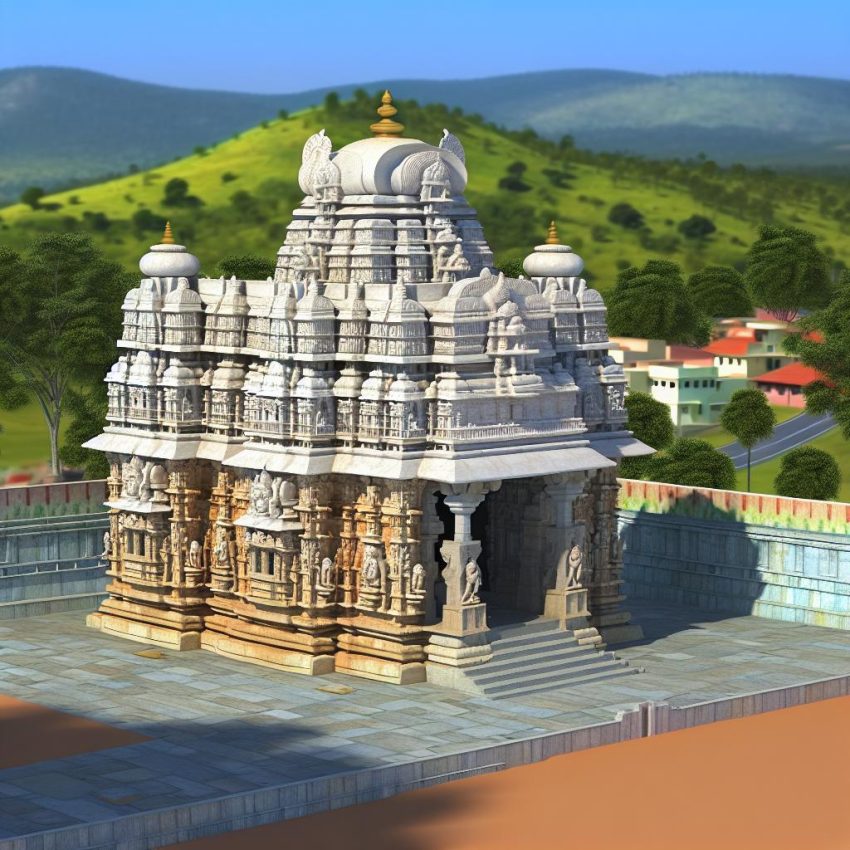Chamundi Hills Temple: A Historical Overview
The Chamundi Hills Temple, located in Mysore, Karnataka, is an esteemed establishment dedicated to the Hindu goddess Chamundeshwari. Perched atop the Chamundi Hill at approximately 1,000 meters above sea level, the temple offers not only spiritual but also scenic experiences, with stunning views of the city below.
Significance and Mythological Background
The temple is named after Goddess Chamundeshwari, an incarnation of Goddess Durga, known for defeating the demon Mahishasura. According to Hindu mythology, the demon king Mahishasura was granted the ability to change between human and buffalo forms and became nearly indomitable. Goddess Chamundeshwari vanquished him after an intense battle, symbolizing the triumph of good over evil.
Mahishasura’s story is deeply embedded in the cultural and spiritual tapestry of the region, often represented in various art forms, folk dances, and festivals. This tale of valor and righteousness is celebrated across Karnataka, prominently highlighted during the Dasara festival. Devotees and tourists alike flock to witness the grandeur of the temple, which stands as more than just a religious site, symbolizing the rich history and traditions of Mysore.
Architectural Details
The Chamundi Hills Temple is a prime example of Dravidian architecture, a style prevalent in southern India known for its grandeur and intricate craftsmanship. The temple features a towering Gopuram or entrance, intricately decorated with numerous carvings and sculptures. Visitors often notice the intricate detailing of Hindu deities in the carvings surrounding the temple.
This architectural style is characterized by pyramid-shaped towers and intricate wedged steps leading to the main shrine. The adornments on the Gopuram include not only figures of deities but also mythical creatures and floral patterns, all painstakingly carved into stone. This meticulous artistry is a testament to the skill and dedication of the artisans who, over the centuries, have contributed to the temple’s grandeur.
Key Attractions
One of the temple’s main attractions is the massive statue of Nandi, the sacred bull and the vehicle of Lord Shiva. Situated on the way to the temple, this monolithic statue is about 15 feet high, and its seamless craftsmanship draws many art enthusiasts.
Beyond its artistic allure, the Nandi statue holds a significant position in Hindu religious practices, symbolizing devotion, strength, and loyalty. The gleaming black granite sculpture is often adorned with garlands and sacrificial offerings, reflecting the devotion of the devotees visiting the temple.
Additionally, the temple premises host various smaller shrines and halls dedicated to different deities, each with its own history and architectural uniqueness. These smaller structures support the temple’s central narrative, offering a more profound spiritual exploration for the pilgrims.
Visiting Tips and Information
For those planning a visit, the temple is accessible via a vehicle-friendly road or by climbing a series of approximately 1,000 steps. Visitors are encouraged to wear comfortable footwear and appropriate attire respecting the sanctity of this religious site.
The steps leading to the temple offer a journey through nature, with strategic resting points providing panoramic views of Mysore. This pilgrimage of sorts is not just about reaching the temple but also about experiencing the tranquility and beauty of the surroundings. As you ascend, the cool breeze and greenery offer respite from the bustling city life, encouraging a contemplative and spiritual mindset.
For a seamless experience, it is advisable to check the temple’s opening hours, especially during local festivals when timings might change. Participating in or observing these festivals, like Dasara, can offer a deeper insight into the local culture and traditions. During such times, the temple and its surroundings are adorned extensively, creating a mesmerizing visual feast.
Convenient amenities for visitors, including parking and refreshment stalls, are available near the temple premises. Furthermore, knowledgeable guides, often available for hire at the temple entrance, can provide detailed information and share fascinating stories about the temple’s history and significance.
For more in-depth information, readers may explore various online resources and travel guides provided by tourism bodies that offer further insights into this historic location. These resources can be invaluable in planning a comprehensive and fulfilling visit to the Chamundi Hills Temple.
Ultimately, visiting the Chamundi Hills Temple is much more than a religious pilgrimage. It offers a confluence of spirituality, history, art, and nature, making it a multifaceted destination. The stories it holds, the artistry it showcases, and the serenity it provides make it a must-visit landmark, appealing to those interested in exploring the depth of Indian culture and spirituality.
